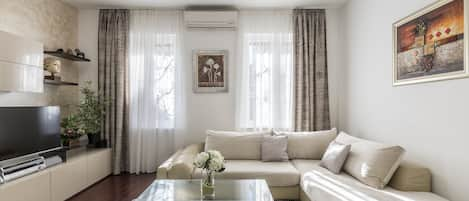Split (Croatia, Central Dalmatia) is not only an urban, cultural and traffic center of Dalmatia with road and sea connections to many resorts in Croatia, but it is often a tourist and excursionists destination. It is a city with a 1700-year old tradition, many archaeological, historical and cultural monuments, including the famous Palace of Diocletian. It is protected by the UNESCO World Heritage List, and it certainly takes a special position, and the warmth of a modern Mediterranean city. Split has a long tradition in tourism.
When visiting Split Tourists should first visit the museums:
- The Museum of Croatian Archaeological Monuments - a capital Croatian cultural project, established in 1893 in Knin,
- The Archaeological Museum from 1820, one of the oldest in Croatia,
- The Treasury of the Split Cathedral, including a valuable collection of religious art,
- The Ethnographic Museum, established in 1910,
- The Museum of the History of the Navy,
- The Museum of Natural Science,
- The Art Gallery, established in 1931,
- The Collection of the Franciscan Monastery in Poljud,
- The Mestrovic Gallery.
Split is a major sports center (the 1979 Mediterranean Games) because he famous and popular sports clubs and competitors. There are also many sports facilities for recreational purposes, from football, basketball and tennis to mountain climbing and shooting sports, water skiing and rowing.
Marjan Forest Park is the green oasis the citizens of Split have been proud of for generations, which is carefully maintained and updated. The park promenades, vista points, solariums, nature paths, playgrounds and the Split zoo. A magnificent view offered from the top of Marjan in the old and new parts of Split. It takes only 15 minutes walk to the normal reach Marjan from the historical core of Split through the old part of the city Varos. Marjan the stairs lead to a further, higher top of Marjan, with a square overlooking the peninsula of Split, Kozjak Mosor, the Kastela bay, Klis and Salona, ??Trogir and Ciovo, and the islands of Solta, Brac, Hvar and Vis. The southern cliffs of Marjan is a very good training ground for mountaineers and climbers free, gather here every April on the traditional Marjan Cup.
Split has a variety of restaurants and taverns offering traditional Dalmatian specialties. There are many beaches and public beaches in the city and its surroundings, the most popular is Bacvice beach, and there is a sand beach almost in the city center.
The cultural offer of Split is extremely rich, especially in the summer. The Split Summer, a traditional festival in the middle of the summer season, the dramas, operas and concerts (from mid-July to mid-August) in the context of the organization of the Croatian National Theatre. Split has several theaters, the Croatian National Theatre, founded in 1893, the Youth Theatre, and the Split Puppet Theatre. Split has many cultural and educational institutions and schools: (established in 1974), the University of Split, the theater, museums, galleries, institutions, and recently a specialized UN institution for the protection of the Mediterranean environment (regional center for activities of the priority action program). Split also has music (Melodies of the Croatian Adriatic, Split Festival of Pop Music), the new every year.
Split-largest city and the largest port in Dalmatia, is standing. On a peninsula between the eastern part of the Gulf of Kastela and the Split Channel Split has four marinas: Split ACI Marina in the north-western part of the city port, the sports boats pier Spinut on the northern coast of Marjan, the sports boats marina Poljud in Port Poljud, the sports boat pier Zenta on the east coast Split. The city port of Split in the town center is only for passenger and ferry traffic. Split ACI Marina has 500 seats in the sea and has 100 ships in the country, and it is open throughout the year.
The airport of Split is situated in Resnik (Kastela).
Split has the Mediterranean climate: hot dry summers (average temperature in July reaches 26 ° C) and mild winters (average annual rainfall is 900 mm). Split is one of the sunniest places in Europe: The average day during the year takes about 7 hours (in July about 12 hours). Vegetation is of the evergreen Mediterranean type, and subtropical flora (palm trees, agaves, cacti) grows in the city and its surroundings.






